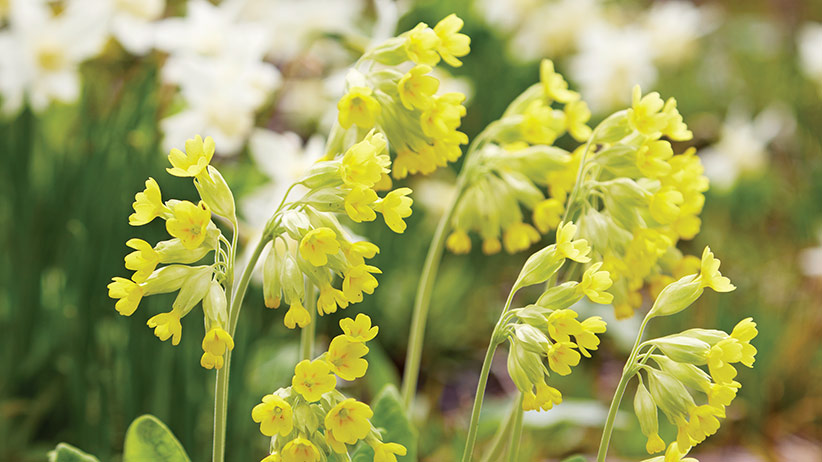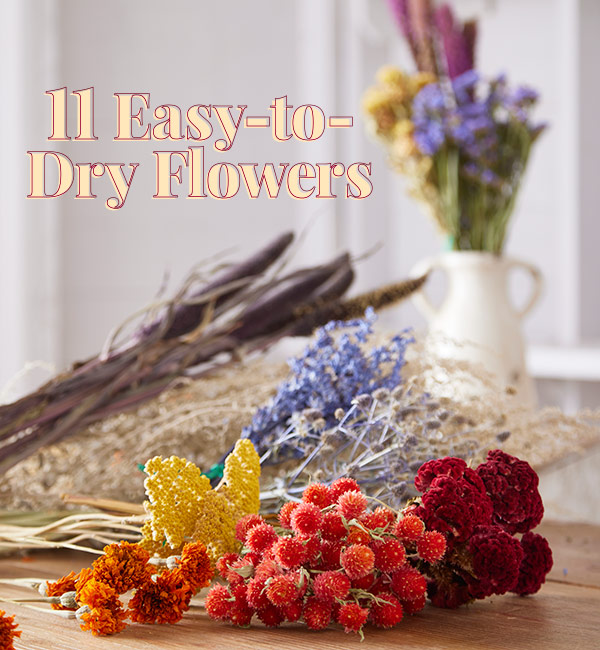
Know which dried flowers are best to grow
Drying flowers doesn’t have to be complicated. To get beautiful colors and sturdy blooms for arrangements and dried-floral projects, sometimes it’s just a matter of choosing the right ones and using simple techniques. Erin Howell-Conner, manager of Howell’s Greenhouse & Pumpkin Patch in Cumming, Iowa, knows a lot about this process. She has a lifetime of experience growing, drying and designing with flowers grown in the fields around her home and knows which ones are the best to dry.
Simple method for drying flowers
When you want to make a dried-flower wreath, a posy or even a larger arrangement in a container, air drying is the simplest and easiest method. All you have to do is hang a small bunch of stems upside down in a warm, dry spot—at least 60 to 70 degrees F — out of direct sunlight, such as an attic or closet. This will give you the quickest results with colors that won’t fade. Flowers can be ready in as little as two weeks, depending on how dense and water-filled the bloom is. The plants in this article are all great choices for air drying and ones that Erin has found hold their color well, don’t shatter easily and grow tall enough to be able to cut long stems for hanging.
How to harvest flowers for drying
The time to cut flowers is after the dew has dried so mold won’t form later. Try to snip stems that are 18 to 24 inches long so you have enough length to assemble the bundles for drying. It makes putting projects, such as a floral wreath, together easier. You don’t have to remove the foliage — it looks nice dried too.
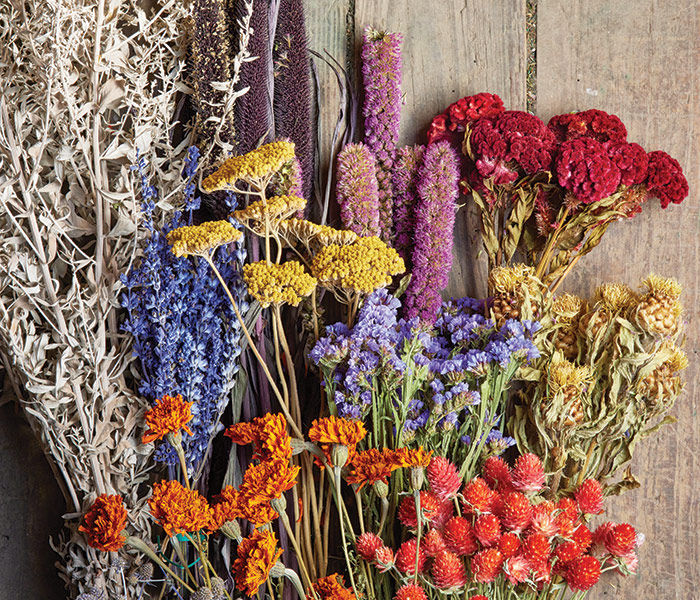
How to air dry flowers
Gather a handful of stems to hang and dry — up to 30 of slender-stemmed plants, such as salvia, but only five to seven of thicker stems, such as celosia. If you try to bundle too many together, they may dry unevenly or mold. Erin likes to hang her flowers in odd-numbered groupings (odd numbers look better in designs) so that when she needs a bunch for an arrangement, she can grab and go with just the right number of blooms. You can use twine, rubber bands or twist ties to hold the stems together. Whatever you use, check them every few days because as the stems dry, they shrink and can fall out of the bundle. Allow a few inches of space between bunches to let air circulate.
Dried flower care
You can leave the flowers hanging once they’re dry or just set them in an empty vase until you’re ready to work on a project. An arrangement can last for years if you’re careful. Dust build-up is a common problem on dried flowers. A thorough spray with a dried floral cleaner, will freshen up your arrangement. So if you hate to say goodbye to the beautiful blooms from your garden, take a look at the flowers that this dried-flower pro recommends for long-lasting color, sturdy stems and shatter-proof blooms.
You Might Also Like:
How to Start Celosia from Seed
DIY Bird Feeder Wreath
Colorful Windowbox Plantings
11 easy flowers to dry
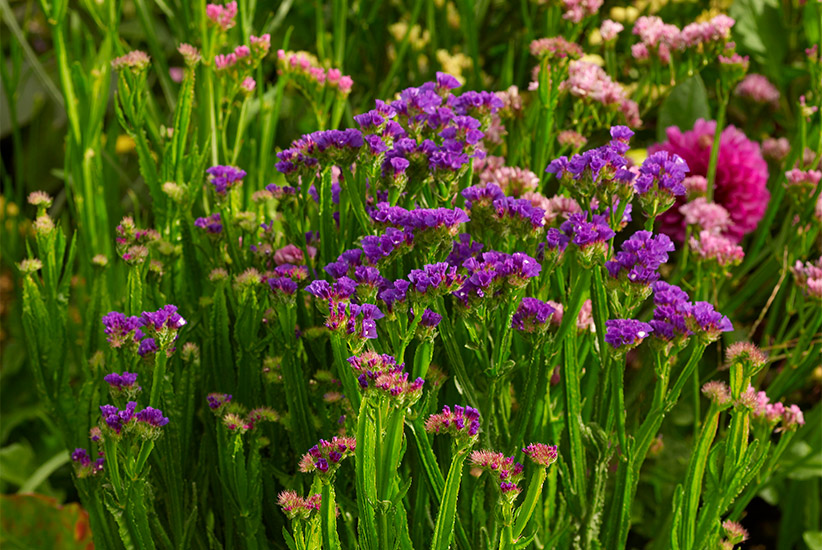
Statice Limonium sinuatum
This classic dried flower is a short-lived perennial that’s grown as an annual in cold-winter areas. It grows best in full sun and dry growing conditions, but high humidity can be hard on plants. A low rosette of foliage produces long, winged, well-branched stems that produce lots of colorful papery bracts. You'll see tiny white flowers emerging from those bracts in summer. Once those turn brown, stems are ready for harvest.
Type Tender perennial (usually grown as an annual) Blooms Purple, yellow, white, pink or apricot papery bracts from late spring to frost Light Full sun Soil Well drained to sandy Size 24 to 36 in. tall, 18 to 24 in. wide Hardiness Cold hardy in USDA zones 8 to 11 Source Johnny’s Selected Seeds, 877-564-6697

Ornamental millet Pennisetum glaucum
In the garden or in an arrangement, the deep purple-brown seedheads of ornamental millet are sure to draw attention. Though it survives winter in USDA zones 9 and warmer, most gardeners grow it as an annual. ‘Purple Majesty’, above, is one easy-to-find variety that grows long stems for cutting. The leaves dry nicely and provide added shape contrast for designs. Stems and flower heads grow larger as the summer progresses, so those you harvest early in the year are better for smaller-stature arrangements, and those taken later work beautifully in dramatic late-season arrangements. Once the seed starts to develop, save some to sow next year — if you can get them before the birds do.
Type Tender perennial (usually grown as an annual) Blooms Deep purple-brown spikes top green, chartreuse or purple foliage from summer to frost Light Full sun Soil Well drained Size 48 to 60 in. tall, 9 to 12 in. wide Hardiness Cold hardy in USDA zones 9 to 11 Source Johnny’s Selected Seeds, 877-564-6697
You Might Also Like:
DIY Dried Floral Wreath
Tips for Growing a Cut Flower Garden
Fall Flower Arrangements
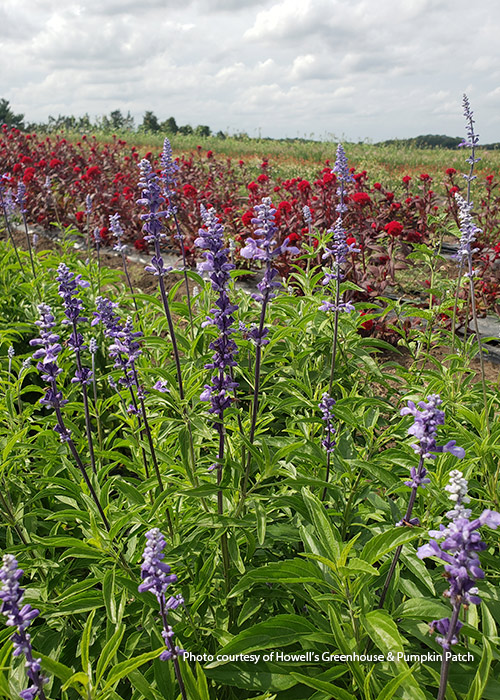
‘Blue Bedder’ mealycup sage Salvia farinacea
Growing up to 3 feet tall, ‘Blue Bedder’ has blooms that are a delicious shade of purple-blue. Erin has found that this variety’s color lasts well and the dried flowers don’t shatter easily. Plus the blue gets even deeper when nights start getting cooler at the end of the season. You can hand pick the blooms for drying by following the stem back to its lowest leaf junction and breaking it off. If you find a lot of resistance, give it a few more days. A stem that snaps right off is at the right stage for harvest — those that are ready will often have several open blooms near the bottom of the spike.
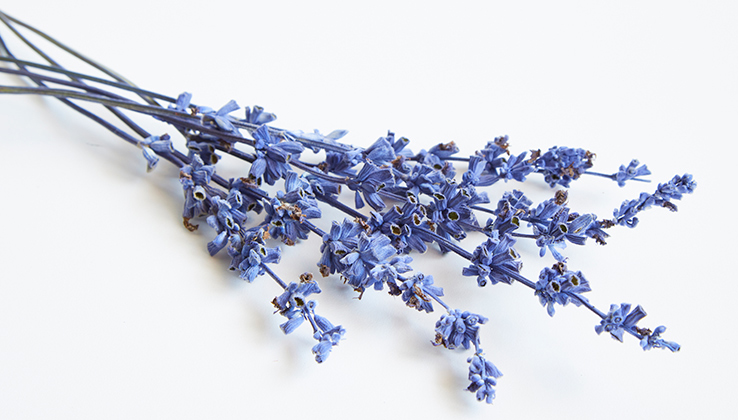
Type Tender perennial (usually grown as an annual) Blooms Blue-purple flowers from early summer to frost Light Full sun Soil Well drained, tolerates clay Size 30 to 36 in. tall, 12 to 18 in. wide Hardiness Cold hardy in USDA zones 8 to 10 Source Pine Tree Garden Seeds
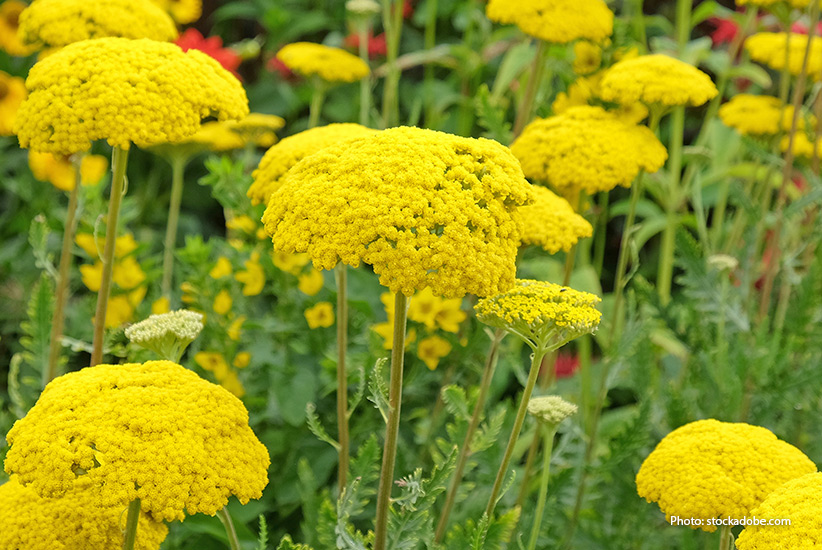
‘Parker’s Variety’ fernleaf yarrow Achillea filipendulina
With domes of gold, ‘Parker’s Variety’ fernleaf yarrow (also called ‘Parker’s Gold’) provides bold color that brightens up arrangements fresh or dried. Its ferny foliage makes a great contrast to companions with broader leaves and has a spicy fragrance that you’ll notice if you run your hands through it. Fernleaf yarrow is easy to grow in infertile, dry soil but can rot in clay. Stems are ready to cut when all the individual flowers are open and yellow. If in doubt, gently push down on the top of the flower. If it’s firm instead of spongy, it’s ready to harvest.
Type Perennial Blooms Yellow blooms in late summer Light Full sun Soil Lean, well drained Size 3 to 4 ft. tall and wide Hardiness Cold hardy in USDA zones 3 to 8 Source Digging Dog Nursery, 707-937-1130

Spike blazing star Liatris spicata
The tall, straight spires of fuzzy blooms make spike blazing star a real attention-getter. This showy native provides an easy summer buffet for passing butterflies in moist or clay-soil areas. The blooms of spike blazing star open from the top down, which makes it a balancing act when you want to cut some to dry. Erin likes to cut them when as much purple is showing as possible, but the top hasn’t yet turned brown. Then group three or four stems together in a bundle to hang in a warm dry spot out of direct sunlight.
Dried flower tip
If the color does happen to fade too much, give it a light coat of floral spray paint, such as Design Master®, to boost the intensity. Keep the can 10 to 12 inches away from the flowers and use a steady movement along the stem so paint doesn’t pool in one spot.
Type Perennial Blooms Purple-pink bloom spikes in summer Light Full sun Soil Moist, well drained, tolerates clay Size 18 to 48 in. tall, 12 to 24 in. wide Hardiness Cold hardy in USDA zones 3 to 8
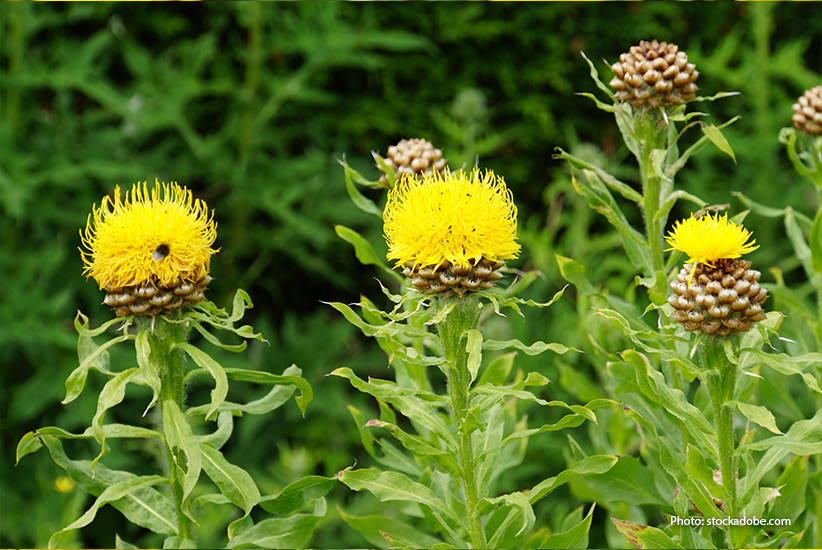
Armenian basket flower Centaurea macrocephala
These long-lasting, 3- to 4-inch yellow blooms will brighten up sunny borders in summer. Plants grow best in well-drained soil and tolerate drought quite well. Armenian basket flower can be an aggressive spreader in some areas if it’s allowed to go to seed. So to keep it under control, be sure to harvest before seeds scatter. Both the papery bract-covered bud and the bloom are great for dried flower projects. Erin suggests harvesting the bloom when it’s not quite open.
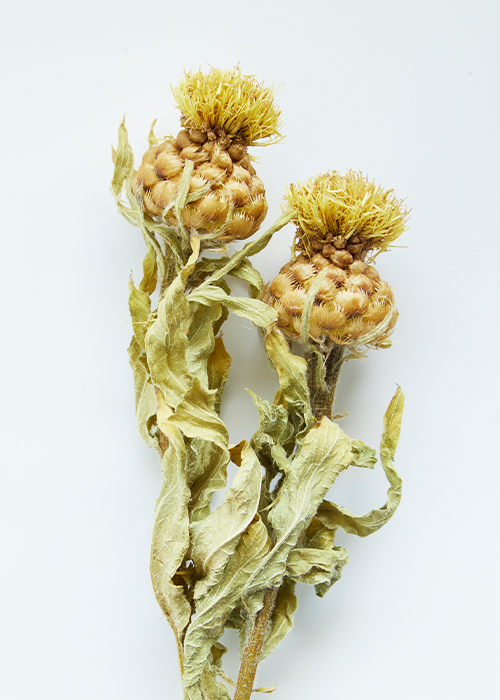
Type Perennial Blooms Yellow blooms in midsummer Light Full sun Soil Well drained Size 36 to 48 in. tall, 18 to 24 in. wide Hardiness Cold hardy in USDA zones 3 to 8 Source Digging Dog Nursery, 707-937-1130
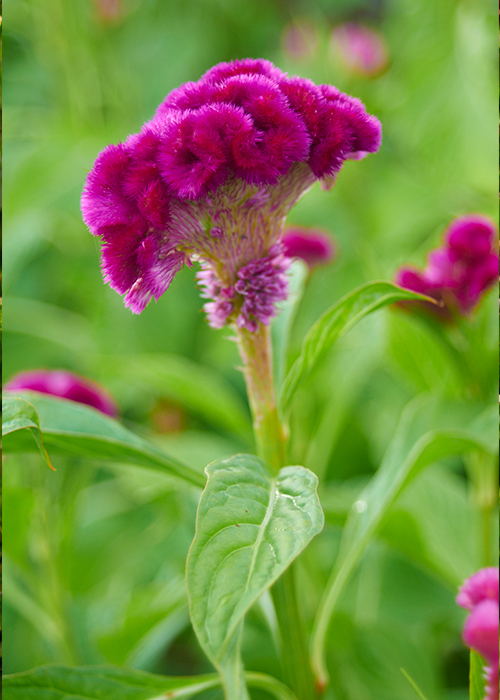
Cockscomb celosia Celosia argentea cristata
The vivid colors and dramatic shape of cockscomb celosia blooms make great focal points. Plants grow best in full sun and warm temperatures. Don’t rush to plant them in spring because plants may rot in cool, wet conditions. Erin has tried a lot of different celosia varieties, but not all of them are tall enough or hold their color. She's had good results with Cramer’s Rose or Burgundy and Kurume ™ Rose or New Scarlet.
Harvesting tip
You’ll know the blooms are ready to harvest when you see the tiny black seeds forming. But they aren’t where you’d expect them to be — look under the bloom on the side of the stem that supports the cockscomb. Tie just a few of the sturdy stems together and be patient because it can take a month for these beauties to dry.
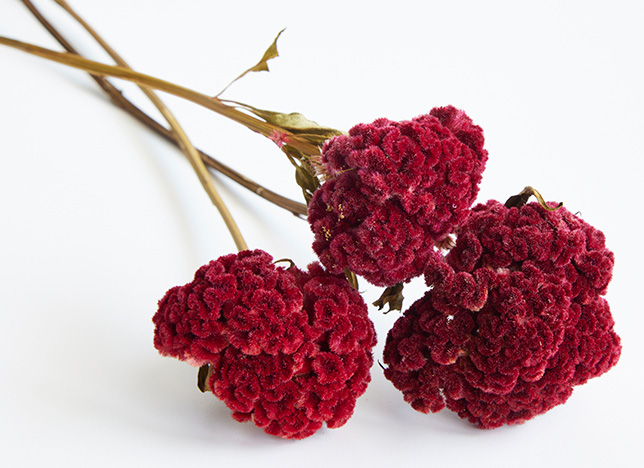
Type Annual Blooms Rosy pink, red or burgundy blooms from early summer to frost Light Full sun Soil Moist, well drained Size 28 to 47 in. tall, 10 to 12 in. wide Source Annie’s Annuals, (Kurume New Scarlet); Johnny’s Selected Seeds, 877-564-6697 (Cramer’s Rose)
You Might Also Like:
How to Grow Celosia
Long-Blooming Plants for Color All Season
Colorful Windowbox Planting with Celosia
Old-Fashioned Flowers
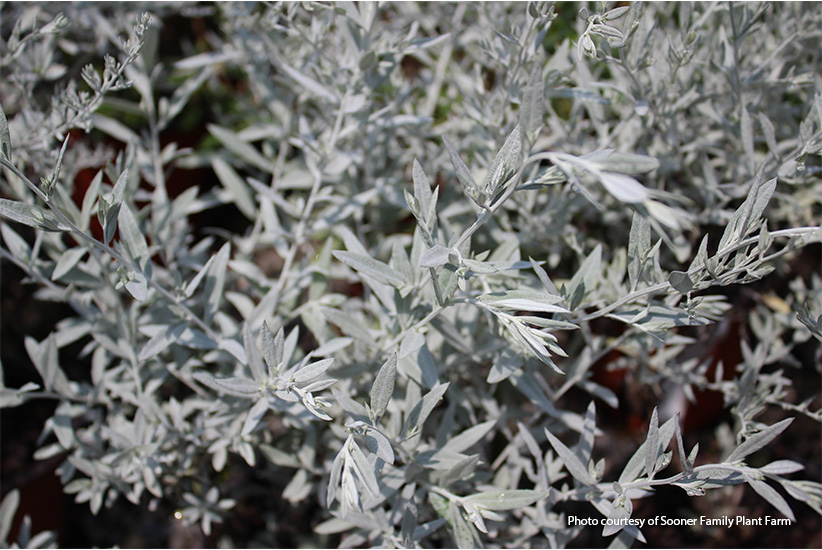
‘Silver King’ artemisia Artemisia ludoviciana
The silvery white foliage of this perennial is a great border companion for full sun and dry growing conditions. Plus, deer and rabbits leave it alone. Both the dried foliage and flowers make a wonderful filler for arrangements and backing for wreaths. Harvest the foliage any time, and the blooms when the buds are just showing color. Test to see if the stems are ready to dry by hanging a few upside down for a couple of hours. Then turn them right side up in a vase. If they droop, they weren’t ready. Wait a few days and try the process again. When they stay upright, you can harvest more.
Type Perennial Blooms Inconspicuous yellow blooms in late summer, silver leaves from spring to frost Light Full sun Soil Well drained Size 2 to 3 ft. tall and wide Hardiness Cold hardy in USDA zones 4 to 9 Source Sooner Plant Farm
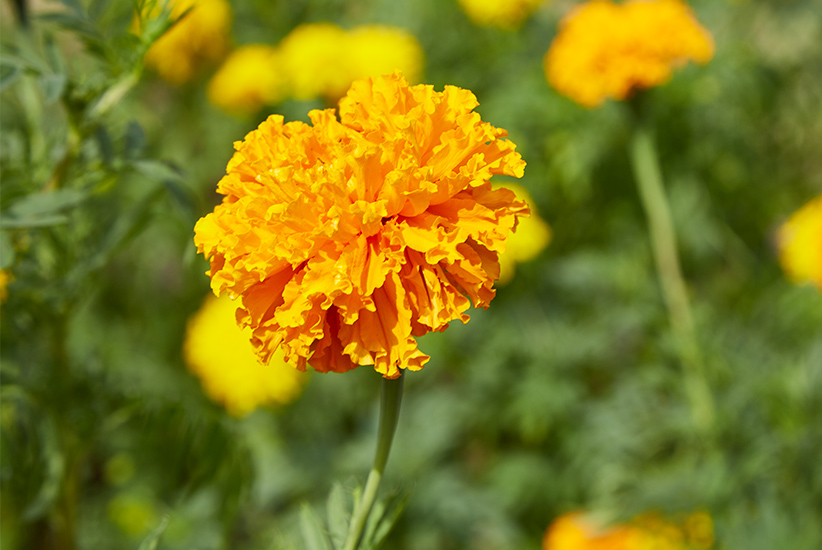
African marigold Tagetes erecta
Give African marigolds plenty of sun and a bit of extra water in the heat of summer and you’ll have loads of flowers until frost. These old favorites provide long-lasting color with little effort. Harvesting flowers for your arrangements will encourage new ones to form. While it’s true that you can dry any marigold, the long stems of tall varieties are easier to use in dried-flower projects. Hybrid ‘Orange and Yellow Beast’ at right can grow up to 42 inches tall! Let the flowers open completely to get maximum color in arrangements, but don’t wait too long or the petals will start to fall.
Type Annual Blooms Orange or yellow flowers from summer to frost Light Full sun Soil Well drained Size 10 to 48 in. tall, 12 to 24 in. wide
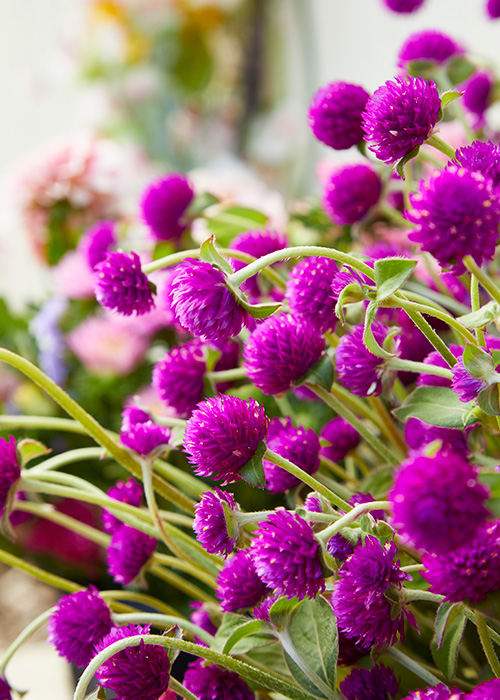
QIS™ globe amaranth Gomphrena globosa
This globe amaranth series is taller and bushier than the ones that you usually find at the garden center, and plants have lots of branching so there are plenty of blooms to harvest. There are several QIS colors and mixes from which to choose, Erin finds that the orange and red ones mature in midsummer, while the purple and pink ones are ready in early fall.
Flower harvesting tip
To see if they’re ready for harvest, check a stem or two to test if they’ll snap off of the plant. Then hang a few to dry for a couple of days and make sure the stems stay straight. If stems curl or arch, they’re more difficult to work into arrangements. Wait a few more days to harvest more, then repeat the process until the stems dry the way you want them to.
Type Annual Blooms Purple, pink, white, lavender, red or orange papery globe-shaped flowers from early summer to frost Light Full sun Soil Well drained Size 22 to 26 in. tall, 8 to 10 in. wide Source Johnny’s Selected Seeds, 877-564-6697
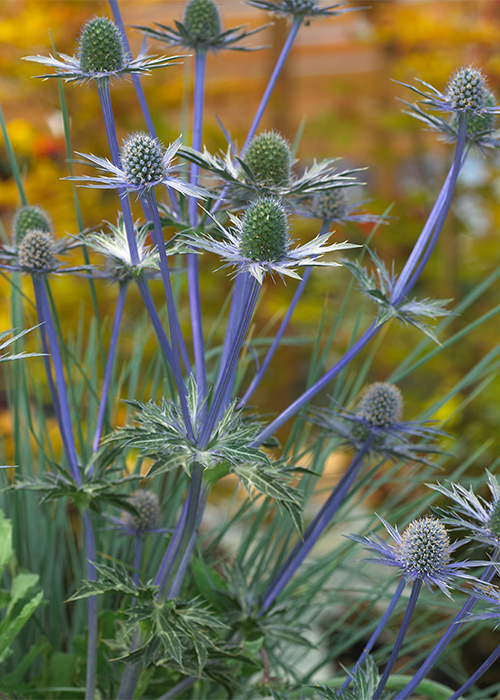
Sea holly Eryngium spp. and hybrids
The well-branched stems of sea holly produce lots of those distinctive flowers with stiff starlike bracts. Plants grow in a range of sizes that provide interesting texture and silvery blue flowers for dried arrangements of all types. To harvest, Erin looks for blooms that are showing plenty of blue and lots of bees and flies buzzing around. Small-flowered types, such as ‘Blue Glitter’ or tripartite sea holly (E. tripartitum), can be used as a unique filler while larger-flowered varieties, such as ‘Miss Wilmott’s Ghost’ (E.giganteum), make a great focal point.
Type Perennial Blooms Silver-blue starlike blooms in midsummer to fall Light Full sun Soil Well drained to lean and sandy Size 12 to 36 in. tall, 10 to 24 in. wide Hardiness Cold hardy in USDA zones 3 to 9















